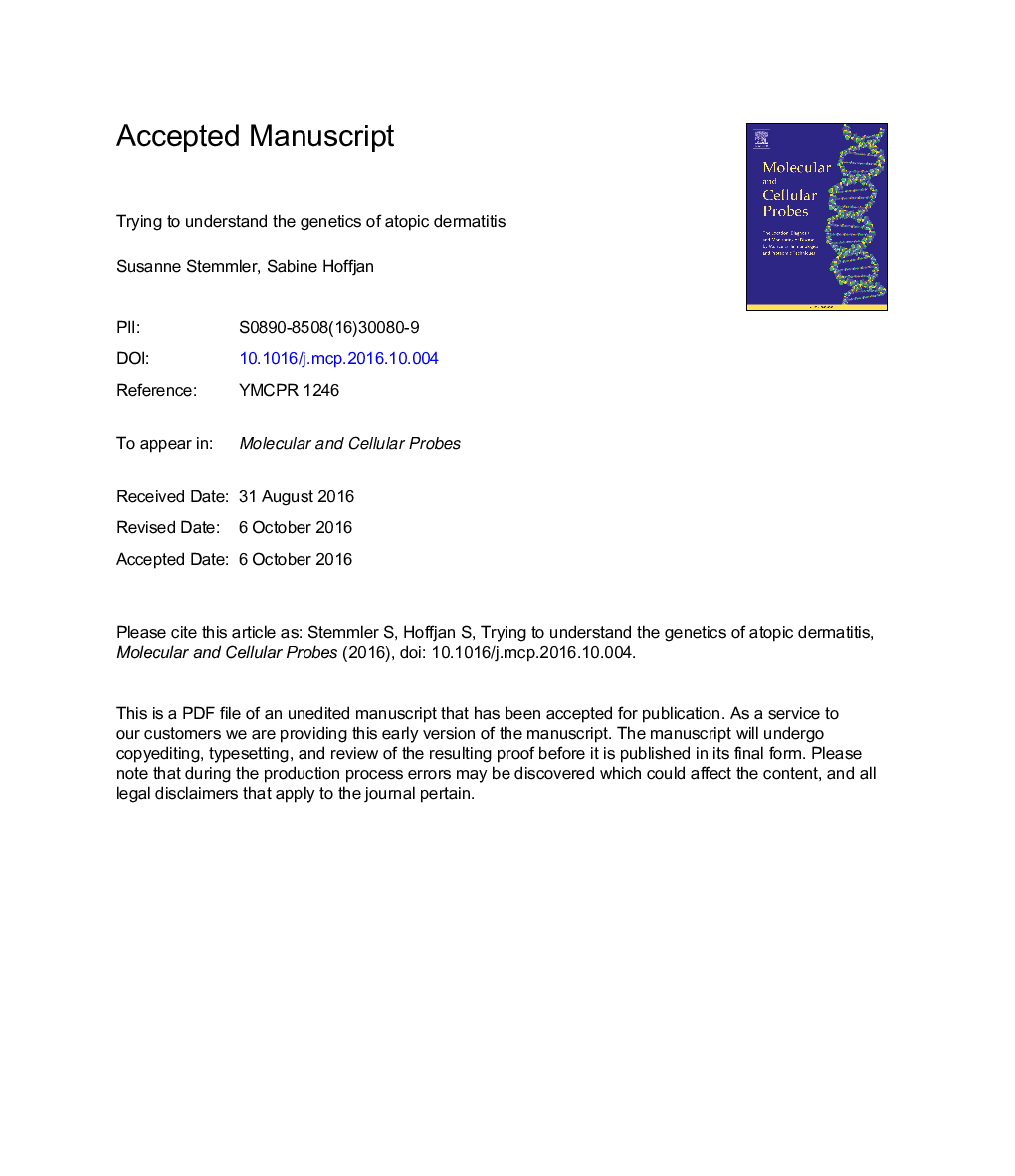| Article ID | Journal | Published Year | Pages | File Type |
|---|---|---|---|---|
| 8478787 | Molecular and Cellular Probes | 2016 | 33 Pages |
Abstract
Atopic dermatitis (AD) is a common and complex skin disease associated with both genetic and environmental factors. Loss-of-function mutations in the filaggrin gene, encoding a structural protein with an important role in epidermal barrier function, constitutes a well recognised susceptibility locus for AD. Further, genome-wide association studies (GWAS), including large meta-analyses, have discovered 38 additional susceptibility loci with genome-wide significance. However, the reported variations only explain a fraction of the overall heritability of AD. Here, we summarize the current knowledge of the role of filaggrin and the epidermal differentiation complex as well as the results of GWAS, with an emphasis on novel findings and observations made in the past two years. Additionally, we present first results of exome sequencing for AD and discuss novel therapeutic strategies.
Related Topics
Life Sciences
Biochemistry, Genetics and Molecular Biology
Cell Biology
Authors
Susanne Stemmler, Sabine Hoffjan,
